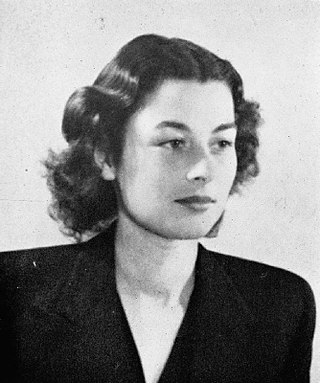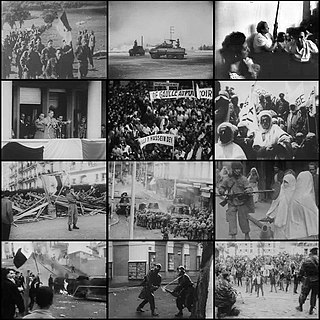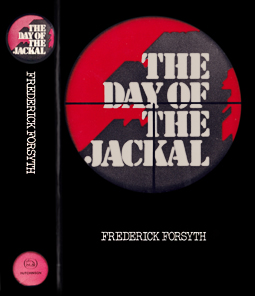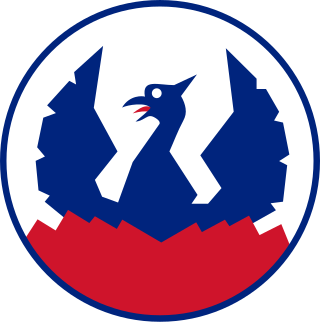
Violette Reine Elizabeth Szabo, GC was a British-French Special Operations Executive (SOE) agent during the Second World War and a posthumous recipient of the George Cross. On her second mission into occupied France, Szabo was captured by the German army, interrogated, tortured and deported to Ravensbrück concentration camp in Germany, where she was executed.

The Organisation Armée Secrète was a far-right French dissident paramilitary and terrorist organisation during the Algerian War. The OAS carried out terrorist attacks, including bombings and assassinations, in an attempt to prevent Algeria's independence from French colonial rule. Its motto was L’Algérie est française et le restera.

The Algerian War was a major armed conflict between France and the Algerian National Liberation Front from 1954 to 1962, which led to Algeria winning its independence from France. An important decolonization war, it was a complex conflict characterized by guerrilla warfare and war crimes. The conflict also became a civil war between the different communities and within the communities. The war took place mainly on the territory of Algeria, with repercussions in metropolitan France.
Peter Morland Churchill, was a British Special Operations Executive (SOE) officer in France during the Second World War. His wartime operations, which resulted in his capture and imprisonment in German concentration camps, and his subsequent marriage to fellow SOE officer, Odette Sansom, received considerable attention during the war and after, including a 1950 film.

The Day of the Jackal (1971) is a political thriller novel by English author Frederick Forsyth about a professional assassin who is contracted by the OAS, a French dissident paramilitary organisation, to kill Charles de Gaulle, the President of France.
Gustave Biéler DSO MBE CdeG was a Canadian Special Operations Executive agent during World War II.
The Service de documentation extérieure et de contre-espionnage, abbreviated SDECE, was France's external intelligence agency from 6 November 1944 to 2 April 1982, when it was replaced by the Directorate-General for External Security (DGSE). It should not be confused with the Deuxième Bureau which was intended to pursue purely military intelligence.

Alfredo Ignacio Astiz is an Argentine former military commander, intelligence officer, and naval commando who served in the Argentine Navy during the military dictatorship of Jorge Rafael Videla during the Proceso de Reorganización Nacional (1976–1983). He was known as El Ángel Rubio de la Muerte, and had a reputation as a torturer. He was discharged from the military in 1998 after defending his actions in a press interview.

Paul Aussaresses was a French Army general, who fought during World War II, the First Indochina War and Algerian War. His actions during the Algerian War—and later defense of those actions—caused considerable controversy.

Force 136 was a far eastern branch of the British World War II intelligence organisation, the Special Operations Executive (SOE). Originally set up in 1941 as the India Mission with the cover name of GSI(k), it absorbed what was left of SOE's Oriental Mission in April 1942. The man in overall charge for the duration of its existence was Colin Mackenzie.

Germaine Tillion was a French ethnologist, best known for her work in Algeria in the 1950s on behalf of the French government. A member of the French resistance, she spent time in the Ravensbrück concentration camp.

Marie-Monique Robin is a French TV journalist and documentary filmmaker. She generally issues books and documentary films together on the topics she investigates, in order to make more people aware of the issues she studies.

Elements from both sides in the Algerian War—the French Armed Forces and the opposing Algerian National Liberation Front (FLN)—used deliberate torture during that conflict (1954–1962), creating an ongoing public controversy. Pierre Vidal-Naquet, a renowned French historian, estimated that there were "hundreds of thousands of instances of torture" by the French military in Algeria.

War Stories is a comic book series written by Garth Ennis and illustrated by a number of artists.
Gertrude Mary Lindell, Comtesse de Milleville, code named Marie-Claire and Comtesse de Moncy, was an English woman, a front-line nurse in World War I and a member of the French Resistance in World War II. She founded and led an escape and evasion organization, the Marie-Claire Line, helping Allied airmen and soldiers escape from Nazi-occupied France. The airmen were survivors of military airplanes shot down over occupied Europe. During the course of the war, Lindell was run over by an automobile, shot in the head, imprisoned twice, and captured and sent to Ravensbrück concentration camp in Nazi Germany. Her son Maurice was captured and tortured. Her son Octave (Oky), also captured, disappeared and presumably died in a German concentration camp.

Dumbo was the code name used by the United States Navy during the 1940s and 1950s to signify search and rescue missions, conducted in conjunction with military operations, by long-range aircraft flying over the ocean. The purpose of Dumbo missions was to rescue downed American aviators as well as seamen in distress. Dumbo aircraft were originally land-based heavy bomber aircraft converted to carry an airborne lifeboat to be dropped in the water near survivors. The name "Dumbo" came from Walt Disney's flying elephant, the main character of the animated film Dumbo, appearing in October 1941.

Intimate Enemies is a 2007 French war film directed by Florent-Emilio Siri, starring Benoît Magimel and Albert Dupontel. It was filmed in France and Morocco.

The Algerian Red Crescent is an Algerian humanitarian volunteer organization founded in 1957. It has been recognized by the International Red Cross and Red Crescent Movement only since 1963.

Damien Gavin Lewis is a British author and filmmaker who has spent over twenty years reporting from and writing about conflict zones in many countries. He has produced about twenty films.

Actéon was a French Navy Redoutable-class submarine of the M6 series commissioned in 1932. She participated in World War II, first on the side of the Allies from 1939 to June 1940, then in the navy of Vichy France. She was sunk in November 1942.















